
The Price of Plastic Pollution: Social Costs and Corporate Liabilities
Plastics harm people, the environment, and the economy (“social costs”). Some social costs will inevitably turn into compensation claims against the plastics industry (“corporate liabilities”), which may present these claims to their insurers. In this report, for the first time, we provide quantitative estimates of both the social costs and the corporate liabilities emerging from all forms of plastic-related pollution.

First Evidence of Microplastics in Antarctic Snow
In recent years, airborne microplastics have been identified in a range of remote environments. However, data throughout the Southern Hemisphere, in particular Antarctica, are largely absent to date. We collected snow samples from 19 sites across the Ross Island region of Antarctica. Suspected microplastic particles were isolated and their composition confirmed using micro-Fourier transform infrared spectroscopy (µFTIR).

The Big Beverage Playbook For Avoiding Responsibility
Big Beverage companies, including Coca-Cola, PepsiCo, and Nestle, are driving the global plastic pollution crisis. This is due, in large part, to the single-use plastic containers in which they sell their beverages. While all beverage container sales in the United States have skyrocketed in recent years, single-use plastic bottles have become particularly popular among the beverage industry.

Reckoning With the U.S. Role In Global Ocean Plastic
Reckoning with the U.S. Role in Global Ocean Plastic Waste calls for a national strategy by the end of 2022 to reduce the nation's contribution to global ocean plastic waste at every step - from production to its entry into the environment - including by substantially reducing U.S. solid waste generation.
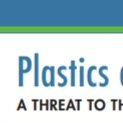
Plastics and Microplastics: A Threat to the Environment and Health
EHHI reviewed nearly 500 scientific studies for this report and found that each of us ingests and inhales millions of microscopic plastic particles each year. Microplastics carry chemical additives and coatings as well as potentially pathogenic microbes. Disturbingly, their impact on human health is not yet known.
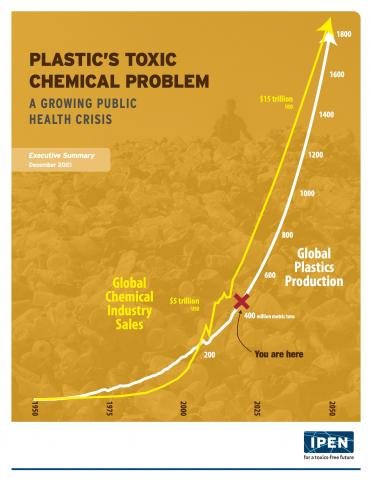
Plastic’s Toxic Chemical Problem: A Growing Public Health Crisis
IPEN and IPW studies show that throughout their life cycle, plastics transport and release toxic chemicals globally, posing serious threats to human health and ecosystems.

A Rapid Review and Meta-regression Analyses of the Toxicological Impacts of Microplastic Exposure in Human Cells
The prevalence of microplastics (MPs) is ubiquitous, found in almost every compartment of the environment; in the air (Wright et al., 2020), food (Teng et al., 2019) and drinking water (Zhang et al., 2020). MP contamination will continue to rise as plastic production and use around the world increases (Lebreton and Andrady, 2019). If plastic waste mismanagement continues as it is or increases, it is predicted that within a century, MP ecological risks will be widespread in ecosystems across the world (SAM, 2019; SAPEA, 2019).

The New Coal: Plastics & Climate Change
Beyond Plastics’ new report reveals that the U.S. plastics industry is a major driver of our climate crisis. Using coal-fired power plants as a benchmark, the report examines ten stages in the creation, usage, and disposal of plastics.
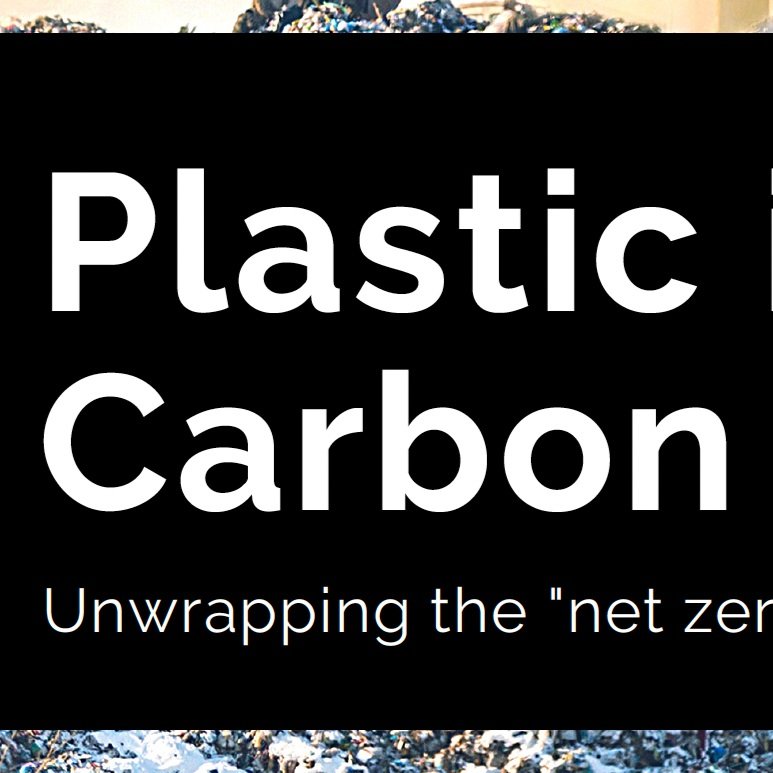
Plastic is Carbon: unwrapping the “net zero” myth
Under the cover of “net zero,” the plastics and petrochemical industry is trying to greenwash expanded plastic production and use. “Net zero” plans purport to make continued use of fossil fuels “emission-free,” but scientists, Indigenous peoples, and civil society organizations oppose this diversion that creates risks for communities and the environment.

Path of Toxic Pollution
How making “forever chemicals” for food packaging threatens people and the climate.

The Global Threat From Plastic Pollution
The rational response to the global threat posed by accumulating and poorly reversible plastic pollution is to rapidly reduce plastic emissions through reductions in consumption of virgin plastic materials, along with internationally coordinated strategies for waste management.
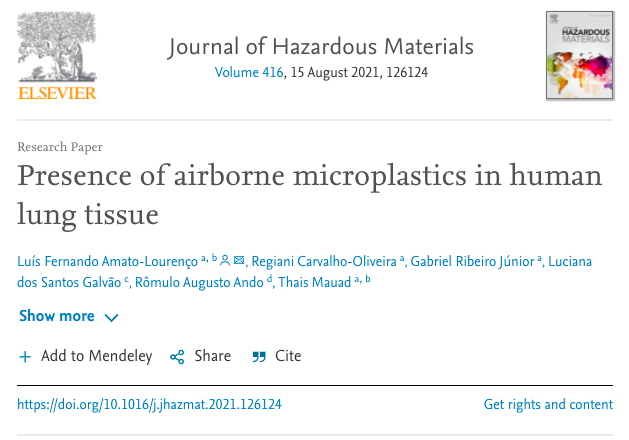
Presence of airborne microplastics in human lung tissue
Microplastics are present in the air and may be inhaled by humans, but whether they have deleterious effects on the respiratory system remain unknown. In this study, we determined the presence of microplastics in human lung tissues obtained at autopsies.

High frequency of micro- and meso-plastics ingestion in a sample of neonate sea turtles from a major rookery
Evidence points to plastics ingestion being an important source of population-level effects in neonate sea turtles.

Aquatic Pollutants In Oceans And Fisheries
Pollutants including industrial chemicals, pesticides, pharmaceuticals, heavy metals, plastics and microplastics have deleterious impacts to aquatic ecosystems at all trophic levels from plankton to whales.

Constraining the atmospheric limb of the plastic cycle
In modeling the atmospheric limb of the plastic cycle, we show that most atmospheric plastics are derived from the legacy production of plastics from waste that has continued to build up in the environment.
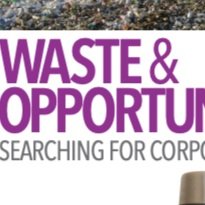
Waste and Opportunity 2020: Searching for Corporate Leadership
This study measures the progress of 50 large companies in the beverage, quick-service restaurant, consumer packaged goods, and retail sectors on six core pillars where swift action is needed to reduce plastic pollution,

